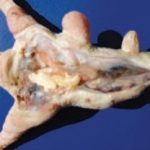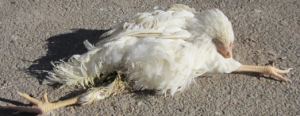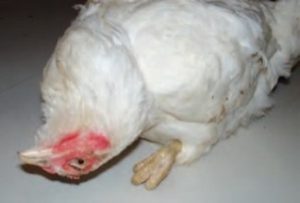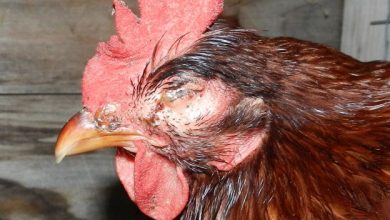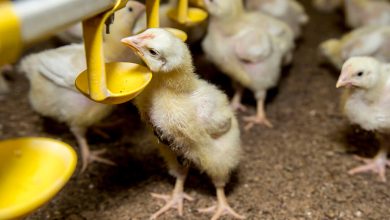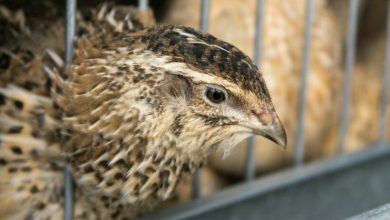Broiler Breeder Diseases
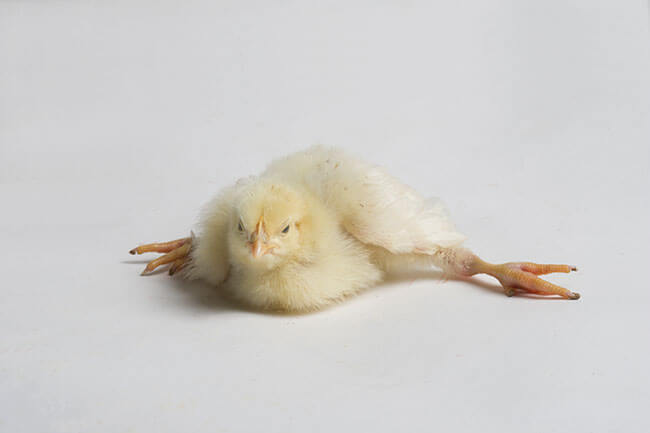
BROILER BREEDER DISEASES
Prof. Dr.R.N.Sreenivas Gowda, Former and Founding VC,KVAFSU, Bidar, Former Director, IAH&VB, Bangalore, Former Prof and University Head, Dpt. Of Pathology, Veterinary College, UAS, Bangalore
Introduction
Broiler breeders are one of the most important components of the poultry industry reared to produce hatching eggs and supply good quality commercial broiler chicks. It is obvious that the growth of broiler chicks depends on parent flock’s health as they carry maternal histocompatibility and antibodies.
The breeders are also susceptible to the same diseases as that of broilers, layers, and other types of chickens. However, most diseases that affect broiler breeders tend to differ from those affecting other types of chickens because of differences in genetics, feeding, husbandry, environment, and management.
There are several reasons why diseases specifically affect broiler breeders. In contrast to broilers, broiler breeders have a relatively long production cycle that averages around 65 weeks; there is more opportunity for problems to develop. The “wear and tear” of breeding and continuous production of fertile eggs also takes its toll on the birds. The stress interplay in immunodeficiency, vaccine failures and expose them many infectious diseases.
During growing period, the parent flocks are fed with restricted feeding for maintenance of uniform body weights. Controlling growth of breeders is essential for their health and reproductive performance. When males are over restricted, losses due to starvation occur in the more subservient birds and there may be inadequate development of both males and hens during the pullet period that does not support their reproductive potential throughout the entire laying period. Losses in males due to trauma, scavenging in litter and on carcasses and litter impaction are also possible as a result of restricted feeding.
Pullets may engorge themselves to the point that the hard distended crop compresses the trachea, sometimes to the point of suffocation. On the other hand, over-conditioned birds that become too heavy are poor breeders and the females develop a host of disease problems including early ovarian regression due to super-ovulation, salpingoperitonitis, prolapse of the cloaca and vagina, and decreased egg production. Poor air quality in the pullet or breeder house leads to chronic, obstructive pulmonary disease from inhaled foreign material that is characterized by multifocal granulomatous pneumonitis and epithelial proliferation.
Breeders are given numerous vaccines to protect against mortality, egg production drops, and provide high maternal immunity to chicks, but if the birds are not handled and vaccinated properly, serious losses can occur.
Artificial Insemination is practiced in many cage reared breeders, handling of birds in cages often cause traumatic injuries and also cause cloacal infections through contaminated semen or contaminated AI instruments. The entire farm economics directly depending on the egg production, any deviation in health jeopardies the farmer’s economy.
Having healthy broiler breeders is critical to the economy of any broiler company, but, diseases of breeders are often poorly understood and not well documented. In this presentation, selected diseases currently affecting broiler breeders have been described including infectious Enterococcal spondylitis, staphylococcosis, Cloacitis, avian hepatitis E. virus (HepEV) infection, and sporadic lymphoid leucosis.
Infectious Diseases of Broiler Breeders
Mainly the breeders suffer from non-infectious causes involving the reproductive system, and are multifactorial with interplay of genetics, environment, nutrition, husbandry, and management. These are described in the earlier article “Broiler breeder diseases, Part-I Non Infectious diseases”.The infections are caused by several agents such as bacteria, Virus, Fungus and parasites.
Bacterial diseases
Bacterial diseases comprise approximately half of the non–outbreak-related mortality in broiler breeders. During the first week of a broiler’s life, approximately 50% of the mortality may be caused due to bacterial infections. Efforts in understanding and controlling these infections are highly important. Necrotic enteritis primarily is a disease affecting young chickens, this infection is of major significance in any production system. Besides increased mortality, the production losses observed in subclinical infections may be dramatic. The common bacterial diseases of broiler breeders are listed in table1.
Table 1. Bacterial Infectious diseases of poultry
| BACTERIAL DISEASES |
| E,coli-Coli bacillosis |
| Mycoplasma |
| Infectious Coryza |
| Fowl Cholera |
| Paratyphoid infections |
| Salmonella |
| Corynebacterium (Campylobacter hepaticus) |
| Ornithobacterium rhenale |
| Clostridial infections – Necrotic & Ulcerative enteritis |
| PARASITIC |
| Coccidiosis |
| Worms |
Infectious Lameness in breeders
Generalized leg weakness and lameness are predominant economic and welfare concerns among broiler breeders. Although noninfectious lameness occurs in broiler breeders, the infectious lameness is also common. The bacterial skeletal lesions that were primarily associated with Staphylococcus aureus is now considered a major contributing factor in the development of crippling mortality and reduced production among commercial broiler breeders. Breeder flocks and hatcheries repeatedly have been suspected of being the source of Staphylococcus spp. and Enterococcus spp. that subsequently are isolated from lame broilers.
Broiler breeders are continuously subjected to stresses such as feed restriction, handling for vaccinations etc. Sustained stress may promote bacterial translocation and bacteremia sufficient to cause vertical transmission of the resident microbial communities from breeder hens to their progeny. Similarly, aggressive males reared on slat system (non-litter) flooring, get damage of their legs and subsequent infection.
The bacterial lameness is common in slat system of rearing. Bacterial osteomyelitis and arthritis are significant causes of lameness in broilers breeders. They are most often a consequence of haematogenous bacterial spread from enteric or respiratory disease but can develop from direct extension from surrounding infected tissues ( table.1).
Table 1. Bacterial Lameness
| Condition | Cause |
| Bacterial Chondronecrosis with osteomyelitis (BCO) | Enterococcus cecorum Streptococcus spp, Staphylococcus spp & E. coli |
| Vertebral Osteomyelitis / Spondylitis / Kinky back | –Enterococcus cecorum, Staphylococcus spp & E Coli |
| Pododermatitis or Bumble Foot or Foot pad dermatitis | Staphylococcus spp. |
| Fowl Cholera | Pasteurella multocida |
| Infectious Synovitis | Mycoplasma synoviae |
1.Bacterial Chondronecrosis with osteomyelitis (BCO): considered to be the most frequent form of lameness in broiler industry. BOC is thought to be initiated by micro-trauma to poorly mineralized columns of cartilage cells in the proximal growth plates of the leg bones.
Fig 1 (A)The pathogenic bacteria enter the circulation via translocation through the skin, respiratory system or gastrointestinal tract, and spread haematogenously to colonize in the osteochondrotic cleft causing osteomyelitis and Vertebral BCO. (B) Vertebral BCO
2.Vertebral BCO: also is known as vertebral osteomyelitis, spondylitis, spondylopathy, and more recently albeit incorrectly as “kinky back.(fig.B)
3.Enterococcal Spondylitis (ES). (ES, vertebral osteomyelitis [VOA], “Spinal Abscess”) emerged as a disease of young male broiler breeders (females are infrequently affected) caused by Enterococcus cecorum. Enterococcal spondylitis is characterized clinically by lameness, paresis, or paralysis. Affected birds have a “sitting dog” or “kinky-back” appearance, move backwards when approached, and may fall over on their side, unable to right themselves.
4.Femoral Head Necrosis
Fig 2, A, Normal proximal femoral head with white cap of epiphysealcartilage (e);
The femoral epiphysisremained in the acetabulum (epiphyseolysis) when the femur was disarticulated, revealing the underlying surface of the growth plate or physis (p), fibrinonecrotic exudate (arrow), and a large fracture revealing a necrotic void (n) in the metaphysis underlying the growth plate.
5.Staphylococcosis Infections: Staphylococcosis is a well-known disease that occurs frequently and causes significant mortality in broiler breeder flocks. Males are most commonly affected, females can also develop the disease, but it is much less common. In males staphylococcosis can account for as much as one-third of total mortality. Affected birds are lame, typically underweight, and may be dehydrated. They have abraded wing tips, sternal bursitis, arthritis, periarthritis, synovitis, tenosynovitis, or osteomyelitis. The organism can also cause pneumonia, septicemia, hepatitis, vegetative valvular endocarditis, orchitis, and skin and beak infections. .Most outbreaks occur just prior to sexual maturity, which is also a time when the birds receive multiple vaccinations. This temporal relationship has led to the belief that vaccine inoculation introduces the organism into the bird. Breeders with certain major histocompatibility complex types are more susceptible to infectious skeletal disease cause by Staphylococcus. Affected males need to be culled. There is no prevention or treatment although careful handling of the birds during weighing, vaccination, and moving may be helpful and good hygiene during vaccination is still recommended.
Table. 2.Infectious skeletal system disorders of meat-type birds.
| Skeletal deformities | Aetiology | |
| 1 | Arthritis, tenosynovitis | Staphylococcus aureus, Staphylococcus epidermidis, avi-adenoviruses, reo-virus. |
| 2 | Bacterial chondronecrosis with osteomyelitis | Staphylococcus aureus, Staphylococcus hyicus, E. coli, Enterococcus cecorum. |
| 3 | Femoral head necrosis | Osteomyelitis, Staphylococcus sp., Gumboro-virus, Rickets, dyslipidemia, physical injuries. |
| 4 | Spinal osteomyelitis | Staphylococcus sp.; Enterococcus caecorum. |
| 5 | Hock joints | Hock joints Staphylococcus sp., stress e.g. coccidiosis, lack of perches. |
| 6 | Tenosynovitis | Mycoplasma synoviae. |
Amyloid Arthropathy: Reactive (AA type) amyloidosis develops secondary to chronic inflammation. Systemic amyloidosis with deposition of amyloid predominantly in the joints (amyloid Arthropathy) has been observed following infection with Enterococcus faecalis or Mycoplasma synoviae.
Hepatic amyloidosis is common in some flocks, but not seen in others. Splenic hyperplasia with numerous lymphoid nodules accounts for enlargement of the spleen are typical lesions.
Cloacitis: Cloacitis associated with ulceration and hemorrhage has been observed in broiler breeder flocks with excessive mortality. Hemorrhage from the cloaca initially presents as bloodstained eggs. Bloody vents subsequently lead to vent pecking mortality. Lesions can appear throughout the cloaca but are most highly concentrated near the opening to the vagina. The cause remains unknown however Neisseria, Salmonella, and Mycoplasma can’t be ruled out. Cloacitis has a pattern suggestive of a sexually transmitted disease, but the possibility that it is simply the result of trauma from egg laying cannot be excluded. It is likely that vent pecking is preceded by cloacal inflammation.
Table3. Bacterial respiratory diseases of poultry
| Bacterial Respiratory Dseases |
| Mycoplasma |
| Staphylococcus |
| Pasteurella multocida |
| Avian Colibacillosis |
| Infectious coryza |
| Chlamydophillus psittaci (pet birds) |
| Bordetellosis (turkey Coryza) |
| Riemerella anatipestifer (Ducks) |
2.Viral Diseases of Breeders
The breeders can be exposed to a wide variety of viruses, even on high health status farms. Viruses can persist in the farm environment for long duration if proper sanitary measures and preventive vaccination programmes are not followed. Table2.presents the common viral diseases that may affect the production systems in poultry operations
Table,2. Common Viral Infectious diseases of poultry
| VIRAL DISEASES |
| Newcastle disease, Ranikhet disease (ND/RD) |
| Infectious Bronchitis(IB) |
| Infectious Larayngo traechitis(ILT) |
| Infectious Bursal disease (IBD) |
| Chicken Infectious Anaemia(CIA) |
| Avian Encephalomyelitis(AE) |
| Avian Influenza (AI) |
| Fow l Pox (FP) |
| Adenoviral infections –IBH, HHS, EDS |
| Viral Arthritis (VA) |
| Marek’s Disease(MD) |
| Leukosis- J. |
Table, 3. Common viral Respiratory Diseases
| Viral Respiratory Diseases |
| Avian Influenza |
| Newcastle /Ranikhet disease |
| Infectious Bronchitis |
| Orthopneumovirus |
| Avian metapneumovirus |
| Infectious laryngotracheitis (ILT) |
The common Viral respiratory infections in breeders are IB, ND and AI
Infectious Bronchitis (IB)
Infectious bronchitis is an acute, highly contagious upper respiratory tract disease in chickens. In addition to respiratory signs, decreased egg production and egg quality are common, and nephritis can be caused by some strains. Attenuated live and killed vaccines are available, but different antigenic types of the avian coronavirus causing the disease do not cross-protect, complicating control efforts.
There is no specific treatment, although supportive treatment with antibiotics to control secondary infection could be beneficial. The rate of spread can be very rapid and therefore infected flocks should be isolated to prevent the spread of disease.
Newcastle disease(ND)
Newcastle disease is a severe, systemic, and fatal viral disease of poultry due to virulent strains of avian paramyxovirus type 1. Clinical signs in unvaccinated birds include sudden death, lethargy, and respiratory distress. Virulent Newcastle disease(vvND), formerly known as exotic Newcastle disease, is a contagious and fatal viral disease affecting the respiratory, nervous and digestive systems of birds and poultry. The disease is so virulent that many birds and poultry die without showing any clinical signs.
Control of ND by Newcastle Disease Vaccine, B1 Type, LaSota Strain and R2B strains have been shown to be effective for the vaccination of healthy chickens 1 day, 2 weeks or 4 weeks of age and older against Newcastle Disease.
Avian Influenza (AI)
Avian influenza or bird flu refers to the disease caused by infection with avian (bird) influenza (flu) Type A viruses. These viruses naturally spread among wild aquatic birds worldwide and can infect domestic poultry and other bird and animal species. This complex disease is caused by viruses divided into multiple subtypes (i.e. H5N1, H5N3, H5N8 etc.) whose genetic characteristics rapidly evolve. The disease occurs with different subtypes and are more prevalent in certain regions than others. The many strains of avian influenza viruses can generally be classified into two categories according to the severity of the disease in poultry:
- low pathogenicity avian influenza (LPAI) that typically causes little or no clinical signs;
- highly pathogenicity avian influenza (HPAI) that can cause severe clinical signs and possible high mortality rates.
Low-pathogenicity strains can cause subclinical infections; however, some strains typically cause respiratory signs or decreased egg production. Highly pathogenic strains may cause widespread organ failure and sudden death, often with high mortality rates. Diagnosis is based on detection of the viral genome or specific antibodies or on virus isolation. Avian influenza can kill entire flocks of birds so this causes devastating losses for the farming sector. The highly pathogenic influenza A virus subtype H5N1 is an emerging avian influenza virus that is causing global concern as a potential pandemic threat.
Vaccination can be considered in addition to already implemented measures (e.g. surveillance, biosecurity and early detections) to prevent and control the spread of HPAI. Preventive vaccination is the optimal vaccination strategy to minimise the number of outbreaks and duration of epidemic and should be conducted in the most susceptible and infectious poultry species in high-risk transmission areas. Multiple administration (i.e. booster vaccinations) can be used to enhance protection.
Infectious Laryngotracheitis (ILT)
Infectious Laryngotracheitis (ILT) is an economically important respiratory disease of poultry. This highly contagious disease is caused by Gallid alpha herpesvirus type 1 (GaHV-1), clinical signs characterized by severe dyspnea, coughing, and rales. It can also be a subacute disease with nasal and ocular discharge, tracheitis, conjunctivitis, and mild rales. The virus can be easily transmitted by infected birds and fomites. Poor biosecurity, transportation of infected birds, and spread of contaminated litter facilitates spread of the virus. Clinical signs of respiratory disease are pathognomonic in that they cough of the blood. Diagnosis is by real-time PCR and histopathology. Implementation of biosecurity is necessary for prevention, but vaccination is commonly used for control of the disease in endemic regions worldwide.
Avian adenovirus:
Sporadic lymphoid leucosis. Sporadic cases of lymphoid leucosis (LL) often seen in older flocks between 30 and 40 weeks of age. LL occurs as sporadic infection and only females are more susceptible. Flock mortality due to sporadic LL approximately may be 1%; however, it accounts for approximately 6% of overall mortality.
Affected birds appear in good body condition, but shows small dark combs, and are out of production. Ovaries of younger birds the tumorous are undeveloped, whereas those in older birds showed tumors and regressed. The lesions are frequently seen in in liver, spleen, kidney and bursa of Fabricius.
Viral Infectious lameness
-
- Tenosynovitis/ Viral Arthritis
- Marek’s Disease (MD)
- Avian Encephalomyelitis (AE)
- Ranikhet Disease (ND or RD)
- Osteopetritis
Viral arthritis is an infectious disease in poultry, such as chickens caused by Avian reoviruses.
Reoviral-induced tenosynovitis/viral arthritis is an economically significant disease of poultry. Affected birds present with lameness, unilateral or bilateral swollen hock joints or shanks, and/or reluctance to move. In severe cases, rupture of the gastrocnemius or digital flexor tendons may occur, although the virus can cause other signs and significant culling may be necessary. The prominent sign is swelling of the digital flexor and metatarsal extensor tendons showing just a small amount of synovial exudate when opened. Vaccination is the primary method used to control this disease.
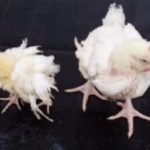
Fig,3. Viral arthritis : swollen joint with serosanguious fluidm and runted bird( Source:Poultry site)
Marek’s Disease(MD) Marek disease is lymphoproliferative disease of chickens caused by a highly contagious alphaherpesvirus (MDV)causing T -cell lymphomas and peripheral nerve enlargement. Clinically progressive paralysis, usually of the leg. A typical leg-paralysis affected bird will have one leg extended forward and one leg and production of tumours in almost all the organs causing immunosuppression Standard criteria used for diagnosis include history, clinical signs, gross necropsy, and histopathology. Although no treatment is available, current vaccines are highly protective.
Fig 4. Marek’s disease: paralysis of legs (Source:Poultry site)
Osteopetrosis: in chickens is due to infection with specific strains of avian leucosis/sarcoma virus. Growth and differentiation of osteoblasts is altered by the virus, resulting in diaphyseal and/or metaphyseal, periosteal, and circumferential accumulation of woven and lamellar bone.
Fig,5.Osteopetrosis in chicken- round swollen and enlarged legs (Source: MSD Manual)
Avian encephalomyelitis: is a viral disease of the CNS of young birds, characterized by neurologic signs such as ataxia and leg weakness that varies from sitting on hocks to paresis that progresses to paralysis and recumbency. Fine tremors of the head and neck are evident in some birds and are characteristic of the disease. Diagnosis is based on history, clinical signs, and characteristic histopathologic lesions. Useful diagnostic tests include virus isolation, RT-PCR assay, and ELISA. Prevention by suitable vaccine.
Fig.6.Avian encephalomyelitis paralysis. lateral recumbency and tremors (Source:Poultry site)
Newcastle disease also known as Ranikhet disease, is one of the most important severe, systemic, and fatal viral disease of poultry caused by virulent strains of avian paramyxovirus type 1, that affect a wide range of birds including chicken. Chickens are the most susceptible where it can cause heavy mortality at a very fast rate, if care is not taken to vaccinate the birds. The clinical signs in unvaccinated birds include sudden death, lethargy, and respiratory distress. Diagnosis is based on laboratory confirmation. Vaccines prevent clinical signs but not infection, and the control of the disease is challenging in enzootic regions.

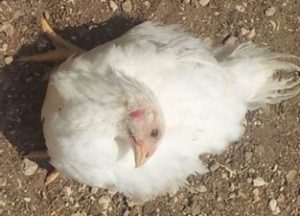
Fig ,7. Newcastle disease: neurological signs-twisting of neck, paralysis of legs (Source:Poultry site)
Avian hepatitis E virus infection: Infections (Hep EV) with hepatitis is an emerging viral problem in broiler breeders. Affected flocks are characterized by decreased production and increased mortality that begins between 40 and 45 weeks of age and continues until the end of the production cycle. Hatchability is not affected. Hens have enlarged, irregularly patterned livers, and splenomegaly. Sometimes bloody fluid or clotted blood is found in the body cavity. HepEV infection has been confused with myeloid leucosis caused by ALV-J virus.
Parasitic infections
Coccidiasis: is a common disease in breeders and is caused by an invasion of protozoa (Eimeria or Iospora) in the intestine. It may appear as sub clinical in many cases. The clinical coccidiosis is usually identified by inflammation of the intestine, lesions, diarrhea with or without blood, weight loss and/or sometimes even death. Individual strains of cocci attack birds differently, resulting in diverse symptoms. The overall symptoms may be one or more of the following: bloody droppings, high mortality, general droopiness, emaciation, a marked drop in feed consumption, diarrhea and a drop in egg production in layers. However currently coccidial vaccines are available to control coccidiosis in breeder flocks instead use of Coccidiostats.
Infection passed to the chick through the egg (Vertical or surface contamination)
- Viruses: reoviruses – viral arthritis, retroviruses – lymphoid leucosis
- Bacteria: Salmonella, coli, staphylococci, mycoplasmas
- Fungus: Aspergillus
Conclusion
Breeder diseases are not well understood or documented and they tend to be complex, involving many factors. A thorough and careful diagnostic investigation is essential in identifying health problems in broiler breeders as per their age.nutrition and management Careful management of body weights, feeding as per breed and age help in good production of hatching eggs. Efforts to control viral and bacterial diseases in poultry broiler should always be done by various efforts. Maintenance of strict management, implementation and administration of vaccines and bio security program are some efforts that are often done by farmers in order to eliminate viral and bacterial diseases. (Acknowledgement: The author duly acknowledges Google reference s and illustrations)



